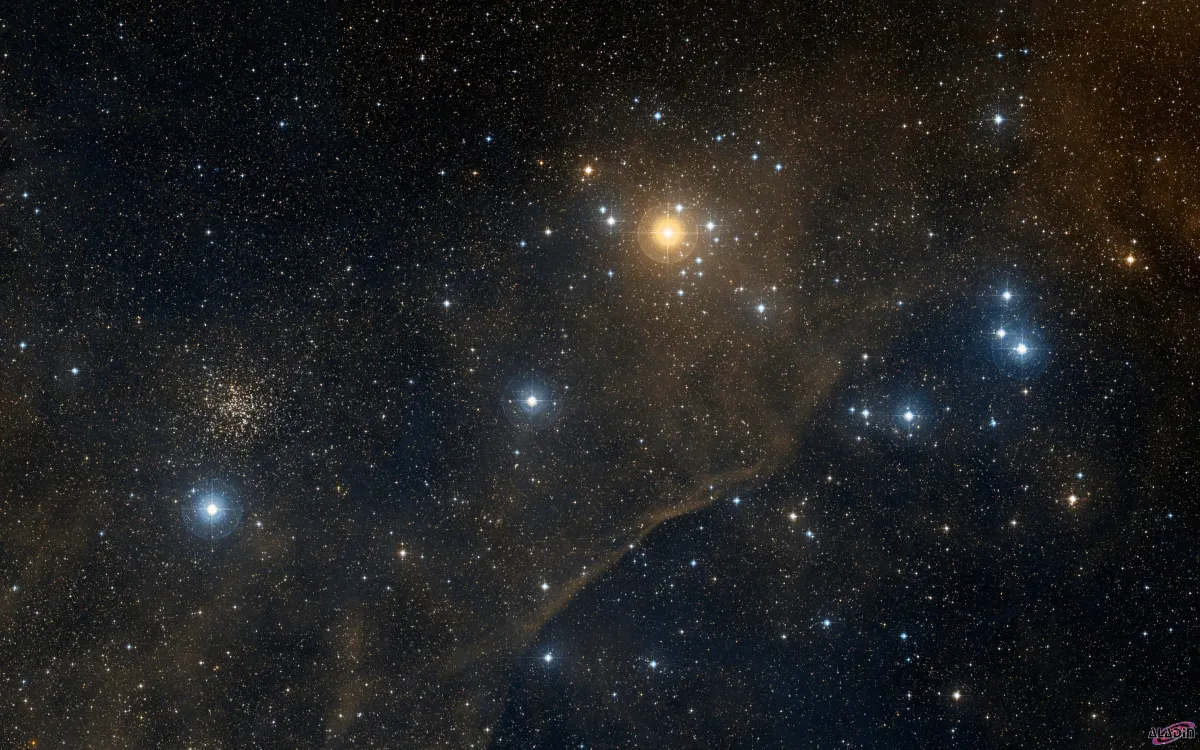Open Cluster NGC 2477

History
The discovery of the open cluster NGC 2477 is credited to the French astronomer Nicolas-Louis de Lacaille (also: Abbé de La Caille) in 1751. He used a 1/2-inch telescope at 8x magnification during his expedition to the Cape of Good Hope. On his list of 42 discovered nebulae he listed it as number three with the notes: «Large nebula of 15-20 arc minutes in diameter.» [8]
James Dunlop listed this cluster as Δ 535 and observed it five times using his 9-inch speculum reflector at Parramatta, New South Wales in Australia. First observation on 8 May 1826. He described the cluster as follows: «A pretty large faint nebula, easily resolvable into small stars, or rather a cluster of very small stars, with a small faint nebula near the north preceding side, which is rather difficult to resolve into exceedingly small stars. This is probably two clusters or nebula in the same line; the small nebula is probably three times the distance of the large nebula.» [50]
John Herschel listed this cluster as h 3103 and made three observations from South Africa: Sweep 540 on 1 February 1835: «Cluster 6th class, bright, large, rich, not very highly condensed in the middle. Stars very remarkably equal. All 12 or 13th mag. Very few 14th mag; none 11th mag. A fine object.» Sweep 659 on 24 December 1835: «Viewed. A very beautiful large cluster, very rich; stars nearly equal, and 12th mag, gradually brighter in the middle, not much compressed in the middle; more than fills the field. (N.B. It is visible in the finder of the equatorial, and in the telescope of that instrument appears as a fine cluster.» Sweep 661 on 26 December 1835: «Superb cluster, gradually brighter in the middle, 20' diameter, much more than fills the whole field. Stars 10 and 11th mag all nearly equal.» [11]
Physical Properties
| Designation | NGC 2477 |
| Type | OCL (I3r) |
| Right Ascension (J2000.0) | 07h 52m 10.0s |
| Declination (J2000.0) | -38° 31' 48" |
| Diameter | 20 arcmin |
| Visual magnitude | 5.8 mag |
| Metric Distance | 1.222 kpc |
| Dreyer Description | !, Cl, B, Ri, L, lC, st 12 |
| Identification, Remarks | h 3103; GC 1593; OCL 720; ESO 311-SC17 |
Finder Chart
The open cluster NGC 2477 is located in the constellation Puppis. On 17 January it in opposition with the Sun and is therefore highest in the sky at local midnight. Best time for observation is around September to June. At a declination of -38° the is raises only 4° above the southern horizon as seen from Switzerland. The more south you go, the better it can be seen.
